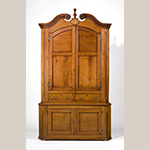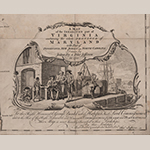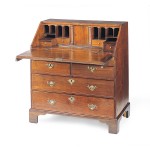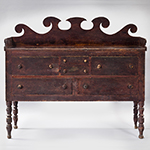Moses Crawford: Tennessee’s Earliest Cabinetmaker Revealed
C. Tracey Parks

In 2008, MESDA acquired a monumental, two-piece walnut Tennessee corner cupboard (Figure 1). With strong architectural appeal and distinctive carved elements, the cupboard exemplifies the highly competent level of cabinetmaking available on Tennessee’s frontier at the close of the eighteenth century and reflects the significant role that Scots-Irish craftsmen from the Shenandoah Valley of Virginia played in furnishing settlers and artisans to East Tennessee. The corner cupboard is part of a distinctive group of furniture made for patrons who settled in and near Knox County, Tennessee, in the final decades of the eighteenth century. Coming primarily from Augusta, Botetourt, and Rockbridge counties in Virginia, many of the families established themselves in the fertile Grassy Valley, about five miles north of the town of Knoxville (Figure 2). Chief among them was the family of William Anderson (1758-1830), who at one time owned MESDA’s corner cupboard. William Anderson came from Rockbridge County, … Continued




